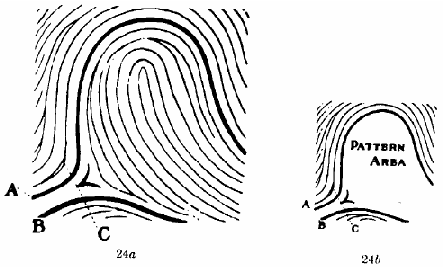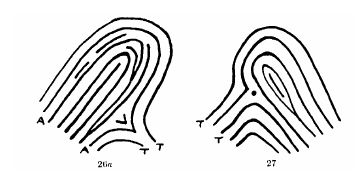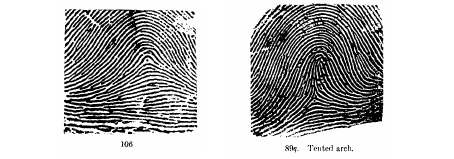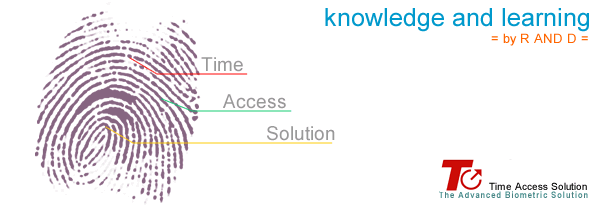Introduction
When we interact with others we are used to identifying them by their
physical appearance, their voice, or other sensory data. When we need
proof of
identity beyond physical appearance we obtain a signature or we look
at a photo
identification card. In Cyberspace, where people need to interact
with digital
systems or with one another remotely, we do not have these tried and
true
means of identification available. In almost all cases we cannot see,
hear, or
obtain a signature from the person with whom we are interacting.
Biometrics, the measurement of a unique physical characteristic, is
an
ideal solution to the problem of digital identification. Biometrics
makes it possible
to identify ourselves to digital systems, and through these systems
identify
ourselves to others in Cyberspace. With biometrics we create a digital
persona
that makes our transactions and interactions in Cyberspace convenient
and
secure. Of all the biometrics available, including face, iris and
retina scanning,
voice identification, and others, the fingerprint is one of the most
convenient and
foolproof.
The advantages of fingerprint biometrics for the purpose of personal
digital
identification include:
• Each and every one of our ten fingerprints is unique, different
from one
another and from those of every other person. Even identical twins
have
unique fingerprints.
• Unlike passwords, PIN codes, and smartcards that we depend upon
today for
identification, our fingerprints are impossible to lose or forget,
and they can
never be stolen.
• We have ten fingerprints as opposed to one voice, one face or two
eyes.
• Fingerprints have been used for centuries for identification, and
we have a
substantial body of real world data upon which to base our claim of
the
uniqueness of each fingerprint. Iris scanning, for instance, is an
entirely new
science for which there is little or no real world data.
In the DigitalPersona Guide to Fingerprint Identification we explain
how we
know that the likelihood of two fingerprints being alike is so infinitesimal
as to be
impossible, how much unique information is available in each print,
how
fingerprints have been used over the centuries as proof of identity,
and how
DigitalPersona is adapting this standard of identification for the
digital age.
The Basics of Fingerprint Identification
Ridges
The skin on the inside surfaces of our hands, fingers, feet, and toes
is
“ridged” or covered with concentric raised patterns. These ridges
are called
friction ridges and they serve the useful function of making it easier
to grasp and
hold onto objects and surfaces without slippage. It is the many differences
in the
way friction ridges are patterned, broken, and forked which make ridged
skin
areas, including fingerprints, unique.
Fingerprint Identification Terminology
Fingerprints are extremely complex. In order to “read” and classify
them,
certain defining characteristics are used, many of which have been
established
by law enforcement agencies as they have created and maintained larger
and
larger databases of prints. Even though biometrics companies like
DigitalPersona
do not save images of fingerprints and do not use the same manual
process to
analyze them, many of the methodologies that have been established
over the
years in law enforcement are useful for digital algorithms as well.
Global Versus Local Features
We make use of two types of fingerprint characteristics for use in
identification
of individuals: Global Features and Local Features. Global Features
are those
characteristics that you can see with the naked eye. Global Features
include:
• Basic Ridge Patterns
• Pattern Area
• Core Area
• Delta
• Type Lines
• Ridge Count
The Local Features are also known as Minutia Points. They are the
tiny,
unique characteristics of fingerprint ridges that are used for positive
identification.
It is possible for two or more individuals to have identical global
features but still
have different and unique fingerprints because they have local features
- minutia
points - that are different from those of others.
Global Features
• Pattern Area – The Pattern Area is the part of
the fingerprint that contains all

the global features. Fingerprints can be read and classified based
on the
information in the Pattern Area. Certain minutia points that are used
for final
identification might be outside the Pattern Area. One significant
difference
between DigitalPersona’s fingerprint recognition algorithm and those
of
competing companies is that DigitalPersona uses the entire fingerprint
for
analysis and identification, not just the Pattern Area. While other
companies’
devices require users to line up their fingerprints on the fingerprint
reader,
DigitalPersona acquires a greater amount of information over the entire
fingerprint, and can obtain enough information to "read"
a print even if only
part of the print is placed on the fingerprint reader.
• Core Point -- The Core Point, located at the approximate
center of the finger
impression, is used as a reference point for reading and classifying
the print.
• Type Lines – Type Lines are the two innermost ridges
that start parallel,
diverge, and surround or tend to surround the pattern area. When there
is a
definite break in a type line, the ridge immediately outside that
line is
considered to be its continuation.
• Delta – The Delta is the point on the first bifurcation,
abrupt ending ridge,

meeting of two ridges, dot, fragmentary ridge, or any point upon a
ridge at or
nearest the center of divergence of two type lines, located at or
directly in
front of their point of divergence. It is a definite fixed point used
to facilitate
ridge counting and tracing.1
• Ridge Count – The Ridge Count is most commonly
the number of ridges
between the Delta and the Core. To establish the ridge count, an imaginary
line is drawn from the Delta to the Core and each ridge that touches
this line
is counted.
Basic Ridge Patterns
Over the years those who work with fingerprints have defined groupings
of
prints based on patterns in the fingerprint ridges. This categorization
makes it
easier to search large databases of fingerprints and identify individuals.
The
basic ridge patterns are not sufficient for identification but they
help narrow down
the search.
Certain products base identification on "optical correlation"
of global ridge
patterns, or matching one fingerprint pattern image to another. DigitalPersona
believes that positive identification must be based on verification
of minutia points
in addition to global features.
The new digital paradigm for fingerprint identification uses many
elements of
the categorization process that has been in place for years, as well
as some
newer concepts for understanding and categorizing global features.
In addition to
defining ridge patterns, DigitalPersona has determined that there
are certain
ways that ridges can flow around on a fingerprint, and that the constraints
on flow
behavior can be exploited for identification. The DigitalPersona Recognition
Engine makes use of the characteristics of global ridge patterns and
flow
characteristics to identify individuals.
There are a number of basic ridge pattern groupings which have been
defined. Three of the most common are loop, arch, and whorl.
1. LOOP

The loop is the most common type of fingerprint pattern and accounts
for about
65% of all prints.
2. ARCH

The Arch pattern is a more open curve than the Loop. There are two
types of
arch patterns – the Plain Arch and the Tented Arch.
3. WHORL

Whorl patterns occur in about 30% of all fingerprints and are defined
by at least
one ridge that makes a complete circle.
Minutia Points
Fingerprint ridges are not continuous, straight ridges. Instead they
are broken,
forked, changed directionally, or interrupted. The points at which
ridges end, fork,
and change are called minutia points, and these minutia points provide
unique,
identifying information.
There are five characteristics of minutia points in fingerprints:
1. Type – There are a number of types of minutia
points. The most common are
ridge endings and ridge bifurcations.
• Ridge Ending -- occurs when a ridge ends abruptly.
• Ridge Bifurcation -- the point at which a ridge
divides into two or more
branches.

• Ridge Divergence – the spreading apart of two lines
which have been

running parallel or nearly parallel.
• Dot or Island – a ridge that is so short it appears
as a dot.
• Enclosure –a ridge that divides into two and then
re-unites to create an
enclosed area of ridge-less skin.
• Short Ridge – an extremely short ridge, but not
so short that it appears as
a Dot or Island
2. Orientation – Each minutia point faces a particular direction.
This is the
Orientation of the minutia point.
3. Spatial Frequency – Spatial frequency refers to how far apart the
ridges are
in the neighborhood of the minutia point.
4. Curvature –The curvature refers to the rate of change of ridge
orientation.
5. Position – The position of the minutia point refers to its x, y
location, either in
an absolute sense or relative to fixed points like the Delta and Core
points.
ข้อความและรูปภาพโดย
DigitalPersona White Paper Guide to Fingerprint Recognition
www.digitalpersona.com
|



















